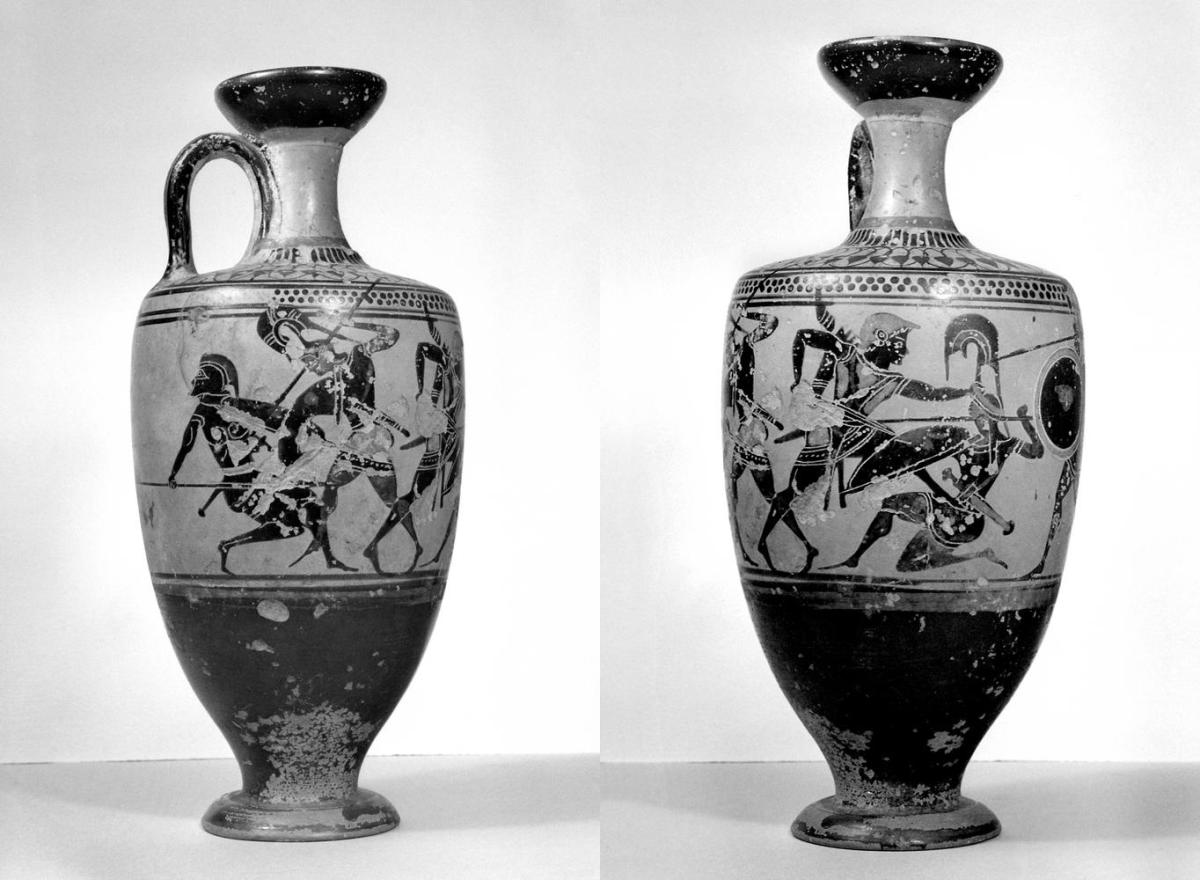Ancient Greek culture had many myths about the warrior women they called the Amazons. The Amazon women were represented as brave and tenacious fighters who lived in female-led communities and trained to fight with the weapons only men would use in normal Greek society – spears and shields, swords, and, especially from the classical period onwards, bows and arrows.
The Amazons weren’t a real people, they were a product of the ancient Greek imagination, although that constructed image may at some point have been influenced by stories of real warrior women living north of Greece in Russia (on which see the Centre for the Study of Eurasian Nomads). In Greek culture, the Amazons played the role of an opponent who was very different from a normal Greek warrior. As part of that image, they were always said to live at the edges of the world; often this meant the northern Black Sea region, (as in Aeschylus' Prometheus Bound 723-5, although some people made north Africa their home (e.g. Diodorus of Sicily, 3.53-4).
There are myths about almost all the major heroes going on adventures to find and fight the Amazons. Straightaway this suggests that their role in myth was to provide an exotic enemy that heroes could defeat and thereby prove their expertise and bravery.
The Iliad (6.186) already includes references to the Amazons. The Trojan ally, Glaucus, recalls how his ancestor, Bellerophon, was set three near-impossible tasks in an attempt to get rid of him– to kill the Chimaera monster, to fight the Solymi tribe, and to fight the formidable Amazons 'women who were the peers of men.’ These opponents were considered so challenging, that when Bellerophon defeated them (and warded off an ambush), it was enough to convince his persecutor to let him live. The fifth-century poet, Pindar, also celebrated this tradition, singing of how Bellerophon 'with Pegasus, from the chilly bosom of the lonely air, once attacked the Amazons, the female army of archers.’ (Olympian Ode 13. 85).
Heracles was also tasked with attacking the Amazons when the cruel king, Eurystheus, wished him to be killed off. Heracles' 9th labour was to steal the girdle of Hippolyte, the Amazon Queen (Apollodorus, Library 2.5), a mission also attempted by Achilles’ father, Peleus (Pindar, Fragment 172). Scenes of Heracles fighting the Amazons are among the most common depictions of Amazons on Greek pottery.
The Amazons were also said to have fought in the Trojan War as allies of Troy. In the 7th – 6th century BCE, an epic poet called Arctinus wrote the Aethiopis, which describes the deaths of the Amazon Queen Penthesilea, Thersites, Memnon (the mythical king of the Ethiopians), and Achilles. Achilles is said to have fallen for Penthesilea just at the moment he killed her, when it was too late to save her. That moment is captured in this superb vase by Exekias.

© The Trustees of the British Museum. BM 1836,0224.127
The travel-writer, Pausanias, tells us that Athens had a famous painting from the fifth-century BCE, which depicted Penthesilea carrying a bow and showing contempt for Paris (10.31.8)
The Athenians had a tradition that Athens had once been invaded by Amazons in the time of Theseus. The episode is described by a range of authors, including Aeschylus (Eumenides, 685-690), Apollodorus (Epitome, 1.16), and Plutarch (Theseus, 26-7).
The Amazon invasion became associated with the Persian Wars. In the 5th century BCE, the glamorous general Cimon commissioned a public painting to commemorate the Persian Wars and it included a scene of the mythical Amazon battle (see Pausanias, 1.15.2). The orator, Isocrates, even used the myth of an ancient Amazon invasion to try and justify a new Persian War (e.g. Panathenaicus, 193). When an attack on Persia was made, under the Macedonian Greek Alexander the Great, Alexander was quickly written into an Amazon myth (see e.g. Plutarch Alexander, 46.1-2).
The Amazons may not have been real, but they had an important place in the ancient Greek imagination. The early stories suggest that they were associated with ideas about initiation and young people proving themselves before moving into more responsible roles. This is probably why so many heroes are said to go on quests to fight them. As time went on, the Amazons’ role seems to have shifted somewhat, taking on a greater importance for the ethnic identity of the Greeks. But at Ephesus, in Asia Minor, the initiation aspect remained strong. At a special festival, unmarried girls would dance like Amazons, with weapons and shields, switching gender roles before their transition to being fully adult women.
Black figure lekythos, high archaic 525-500BCE, showing an 'Amazonomachy', or 'battle with Amazons'.

© Ure Museum (51.4.9)
Fifth-century relief showing a hoplite soldier fighting an Amazon.

© Piraeus Museum, Athens. Photo by S. Nevin


